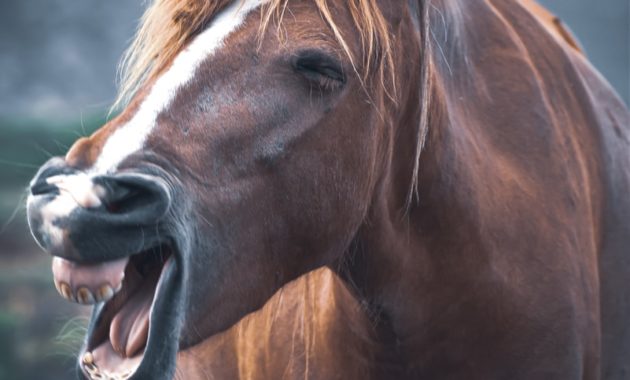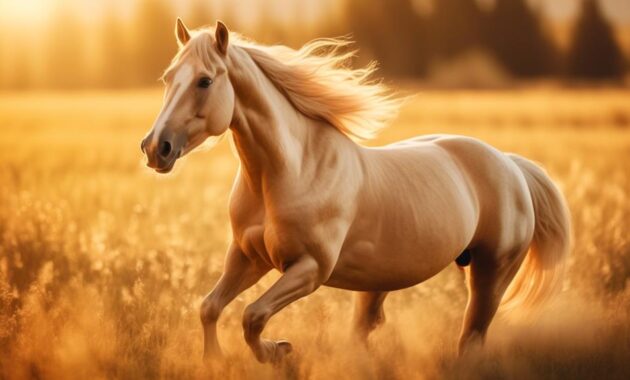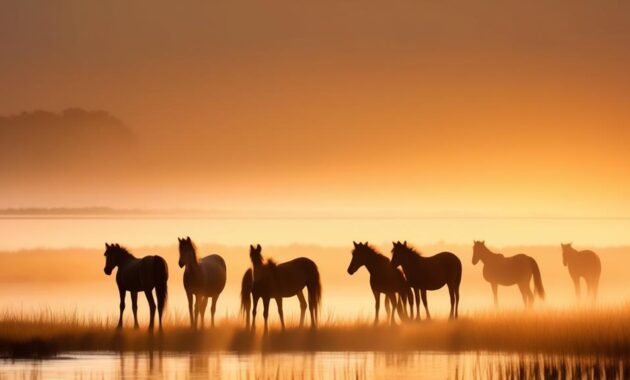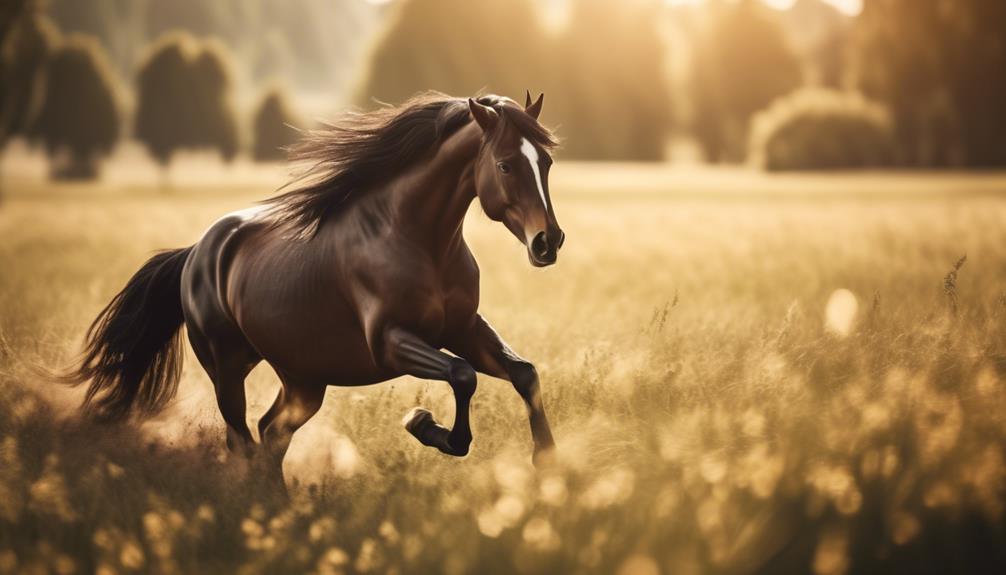
Are you familiar with the Westphalian horse, a breed that epitomizes strength, adaptability, and undeniable allure?
Originating in Westphalia, Germany, these magnificent creatures have a fascinating lineage that traces back to their wild horse ancestors in the region.
Since their breeding efforts began in 1826, Westphalians have evolved into exceptional performers in various equine sports, particularly dressage and show jumping.
Their calm and easy-going nature makes them suitable for riders of all levels, but there is so much more to discover about these remarkable animals.
So, if you’re curious to uncover the secrets behind their powerful presence and irresistible beauty, continue on this journey with us.
Key Takeaways
- Westphalian horses originated in Westphalia, Germany and were bred from wild horses in the region.
- They have a versatile and powerful build, making them excel in various equine sports such as dressage, show jumping, eventing, and driving.
- Westphalian horses are known for their exceptional temperament and trainability, making them suitable for all levels of horse owners, trainers, and riders.
- They share similarities with Hanoverian horses in terms of physical characteristics, such as an attractive head, long neck, deep chest, and strong hindquarters.
Origin and History
The Westphalian horse breed has a rich origin and history, originating in Westphalia, Germany, and descending from wild horses in the region. These horses have a long lineage that can be traced back to the 18th century when breeding began in 1826.
Over the years, the Westphalian breed has been influenced by various bloodlines, including Oldenburg, Anglo Norman, Thoroughbred, and Hanoverian. Originally used as farm horses before the advent of tractors, they’re now highly sought after for their versatility in various equine sports.
The Westphalian horses possess traits that make them relaxed and easy to work with, making them suitable for all levels of horse owners, trainers, and riders. They excel in dressage and show jumping, thanks to their work ethic and even temperament.
In terms of appearance, they resemble the Hanoverian Horse, with an attractive head, long neck, deep chest, powerful loins, sloping shoulders, and strong hindquarters. Despite their power, they’ve a lighter build compared to other warmblood breeds. Westphalian horses can come in a variety of coat colors, including black, gray, chestnut, and bay, and there are no specific color requirements for the breed.
Regular grooming, using equine shampoo and grooming tools, is necessary to maintain their beautiful appearance.
Breeding and Bloodlines
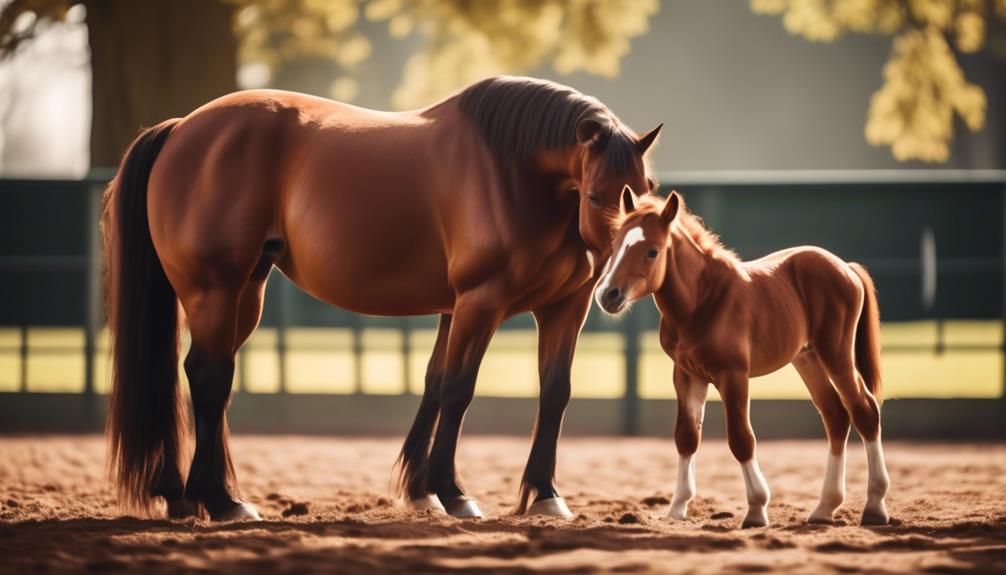
To understand the Westphalian horse breed’s breeding and bloodlines, it is important to delve into their historical lineage and the influential factors that have shaped their characteristics. The Westphalian horse originated in Westphalia, Germany, and is descended from wild horses in the region. Breeding began in 1826 and the breed has been influenced by Oldenburg, Anglo Norman, Thoroughbred, and Hanoverian bloodlines. These horses were originally used as farm horses before tractors, but they are now highly sought after for various equine sports. They are known for their relaxed and easygoing nature, making them suitable for all levels of horse owners, trainers, and riders. Westphalians excel in dressage and show jumping, thanks to their work ethic and even temperament. They have an attractive head with a slightly dished or straight profile, a long neck, deep chest, powerful loins, sloping shoulders, and strong hindquarters. Despite their power, they have a lighter build compared to other warmblood breeds. Common coat colors for Westphalians include black, gray, chestnut, and bay, although they can have any solid equine color. Grooming requirements include a consistent routine using equine shampoo and grooming kit for cleaning and detangling, as well as a curry comb, dandy brush, and shedding blade for removing debris and loose hair. A body finishing brush and damp rag are used for sensitive areas, while a hoof pick is necessary for cleaning hooves and inspecting their health.
| Breeding and Bloodlines | |
|---|---|
| Origin | Westphalia, Germany |
| Descendants | Wild horses in the region |
| Breeding Began | 1826 |
| Influenced By | Oldenburg, Anglo Norman, Thoroughbred, Hanoverian |
| Current Use | Various equine sports |
Versatility in Equine Sports

Now let’s explore the versatility of Westphalian horses in various equine sports.
Westphalians are known for their exceptional athleticism and adaptability, making them highly sought after in the world of equestrian sports. These horses excel in a wide range of disciplines, including dressage, show jumping, eventing, and even driving.
Their powerful build, combined with their lightness and agility, allows them to perform precise and intricate movements in dressage. When it comes to show jumping, Westphalians showcase their natural jumping ability and quick reflexes, making them formidable competitors in the ring.
In eventing, they demonstrate their endurance and versatility by excelling in all three phases – dressage, cross-country, and show jumping. No matter the discipline, Westphalian horses consistently impress with their versatility, making them a top choice for riders of all levels.
Temperament and Trainability
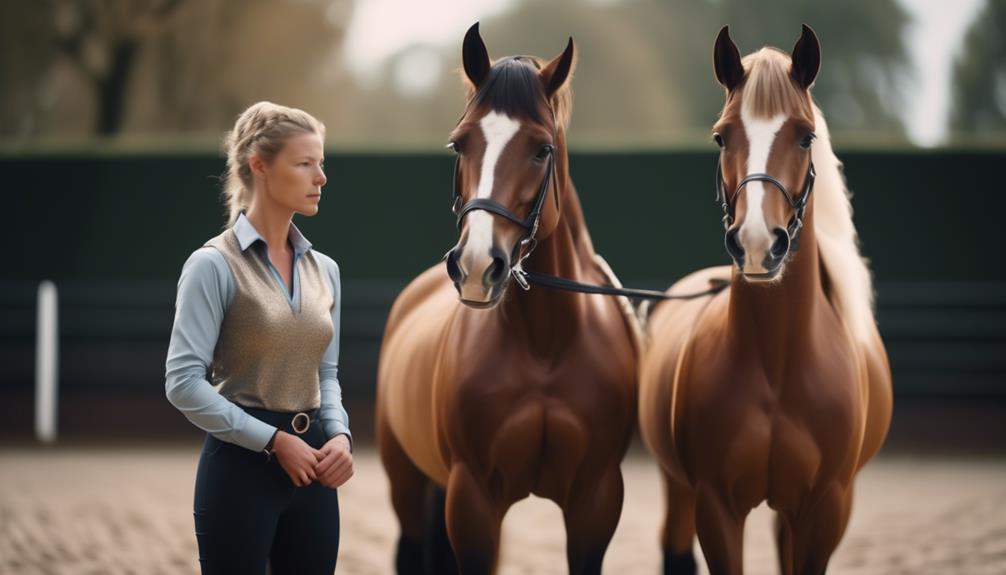
With their relaxed and easy-going nature, Westphalian horses are known for their exceptional temperament and trainability. These horses have a natural willingness to please and are highly receptive to training.
Whether you’re an experienced rider or a novice, the Westphalian horse’s calm and cooperative demeanor makes them suitable for all levels of horse owners, trainers, and riders. They’re quick learners and adapt easily to new tasks and environments.
Their work ethic and even temperament make them a pleasure to work with and be around. Whether you’re training them for dressage or show jumping, their trainability allows them to excel in a variety of equine sports.
The Westphalian horse’s exceptional temperament and trainability truly set them apart as a versatile and reliable equine partner.
Similarities to Hanoverian Horse
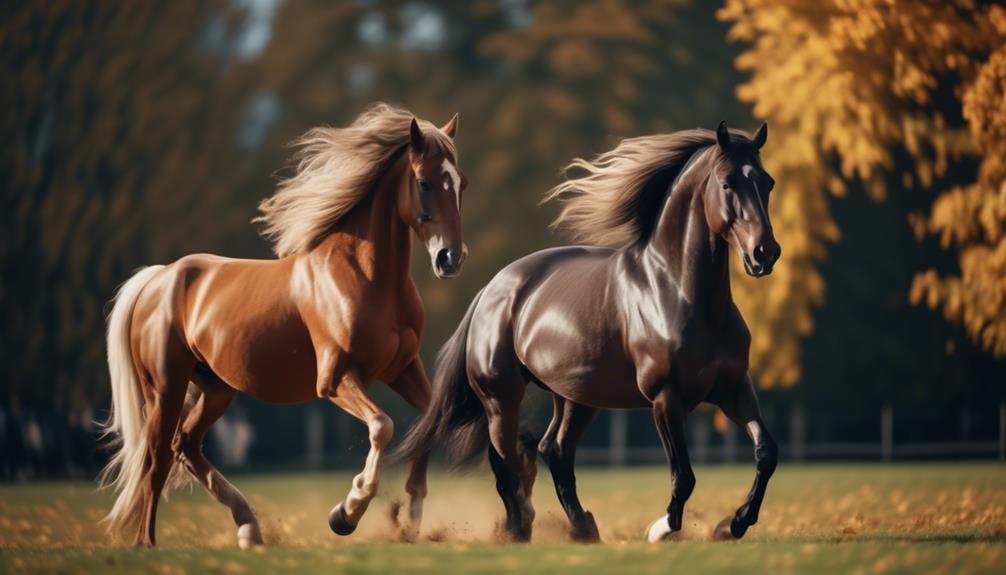
Their exceptional temperament and trainability aren’t the only qualities that distinguish Westphalian horses. They also share striking similarities with the Hanoverian Horse.
Both breeds boast an attractive head with a slightly dished or straight profile, a long neck, and a deep chest. They also possess powerful loins, sloping shoulders, and strong hindquarters, contributing to their impressive athleticism.
While the Westphalian Horse has a lighter build compared to other warmblood breeds, it still maintains the same elegance and grace as the Hanoverian Horse.
Additionally, both breeds come in a variety of colors, including black, gray, chestnut, and bay, making them visually stunning.
Whether you’re a fan of the Westphalian or Hanoverian Horse, you can’t deny their undeniable beauty and similar physical attributes.
Physical Characteristics and Anatomy
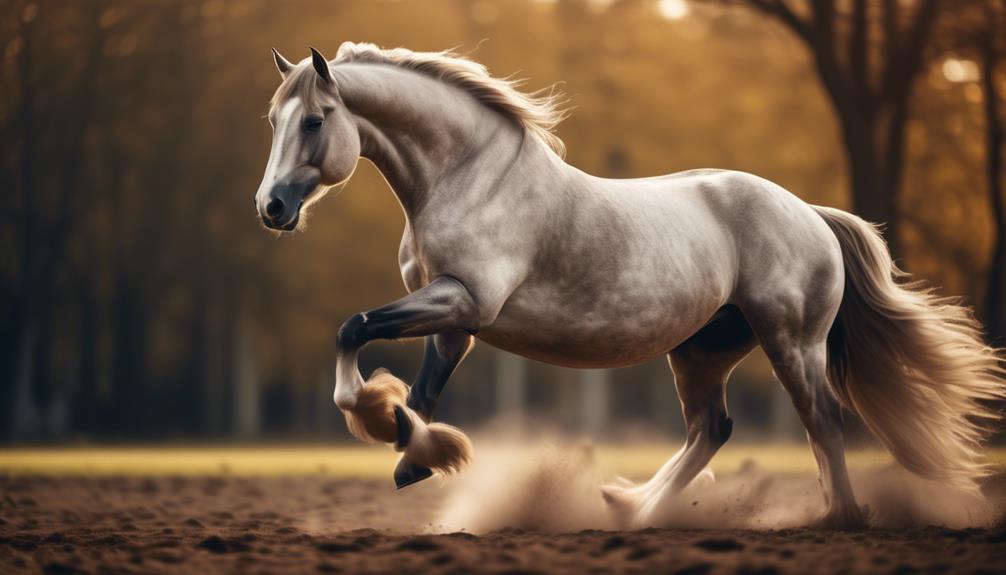
To understand the Westphalian horse breed’s physical characteristics and anatomy, let’s delve into their impressive structure and unique features.
- Attractive head with a slightly dished or straight profile
- Long neck and deep chest
- Powerful loins, sloping shoulders, and strong hindquarters
- Lighter build compared to other warmblood breeds
- Common coat colors include black, gray, chestnut, and bay
The Westphalian horse bears a similarity in appearance to the Hanoverian horse. They’ve an attractive head with a slightly dished or straight profile, complemented by a long neck and deep chest. Their powerful loins, sloping shoulders, and strong hindquarters contribute to their impressive structure.
In comparison to other warmblood breeds, the Westphalian horse has a lighter build. When it comes to coat colors, they can be found in various shades, including black, gray, chestnut, and bay. These physical characteristics and anatomy make the Westphalian horse a captivating and versatile breed.
Coat Colors and Variations
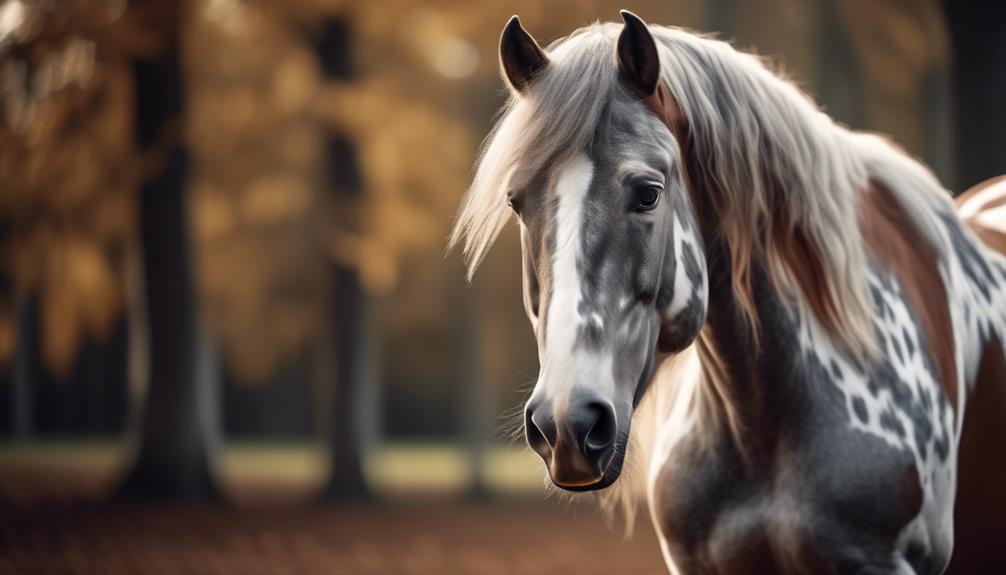
Continuing our exploration of the Westphalian horse breed, let’s now turn our attention to the fascinating array of coat colors and variations they possess.
Westphalian horses can come in a range of colors, including black, gray, chestnut, and bay. However, they aren’t limited to these common shades, as they can also have any solid equine color. This means that you may come across Westphalian horses with unique and eye-catching coat patterns.
Whether you prefer a solid color or a more intricate pattern, the Westphalian breed offers a diverse selection to suit every taste. So, whether you’re drawn to the elegance of a black coat, the regal presence of a gray, or the warmth of a chestnut, you’re sure to find a Westphalian horse that captures your heart.
Grooming Tips and Techniques
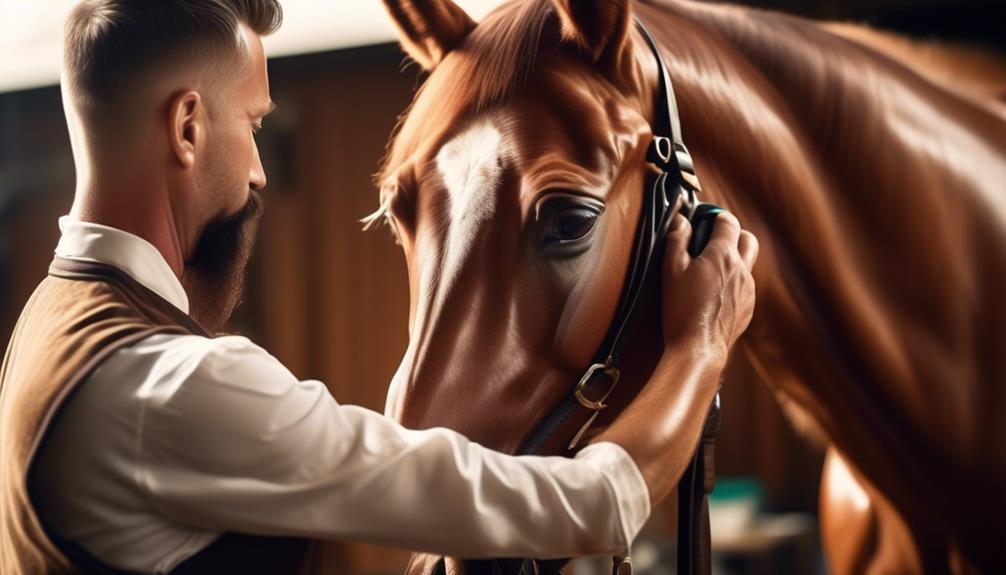
Keep your Westphalian horse looking its best with these grooming tips and techniques.
- Start with a consistent grooming routine to maintain a clean and healthy coat.
- Use equine shampoo and a grooming kit specifically designed for horses to clean and detangle the mane and tail.
- Remove debris and loose hair with a curry comb, dandy brush, and shedding blade.
- Pay attention to sensitive areas by using a body finishing brush and a damp rag for a gentle clean.
- Regularly clean the hooves with a hoof pick to ensure their health and inspect for any issues.
Recommended Grooming Tools
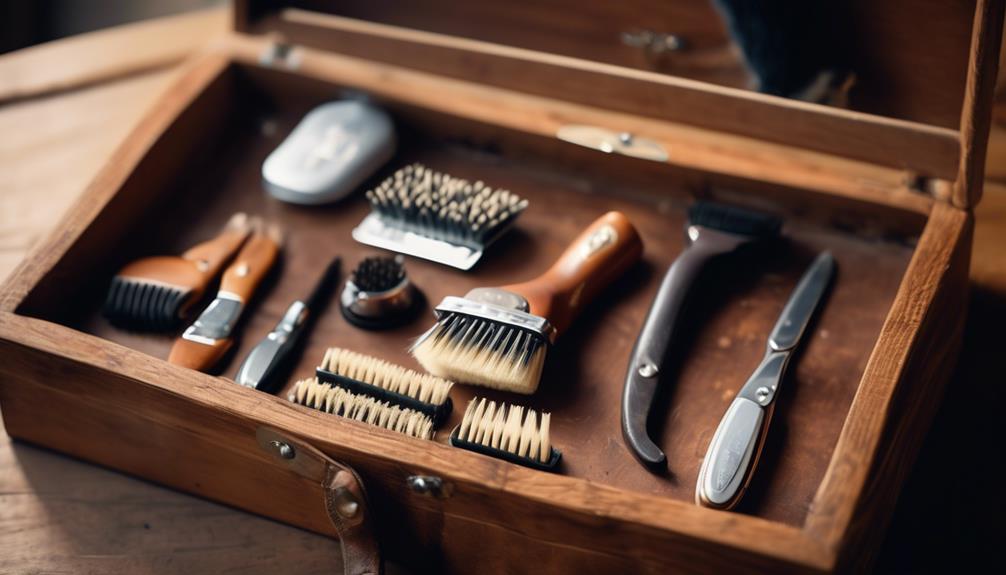
Maintain your Westphalian horse’s impeccable appearance by using the recommended grooming tools. These tools will help you keep your horse clean, healthy, and looking its best. Here are some essential grooming tools for your Westphalian horse:
| Grooming Tool | Purpose |
|---|---|
| Curry Comb | Removes dirt and loose hair from the coat |
| Dandy Brush | Helps to remove dirt and debris from the coat |
| Shedding Blade | Helps to remove loose hair during shedding season |
| Body Finishing Brush | Gives the coat a smooth and glossy finish |
| Hoof Pick | Cleans the hooves and checks for any signs of hoof issues |
Using these grooming tools regularly will not only keep your Westphalian horse looking beautiful, but it will also help you bond with your horse and ensure its overall well-being. So, make sure to invest in these essential grooming tools and enjoy the grooming process with your magnificent Westphalian horse.
Hoof Care and Maintenance
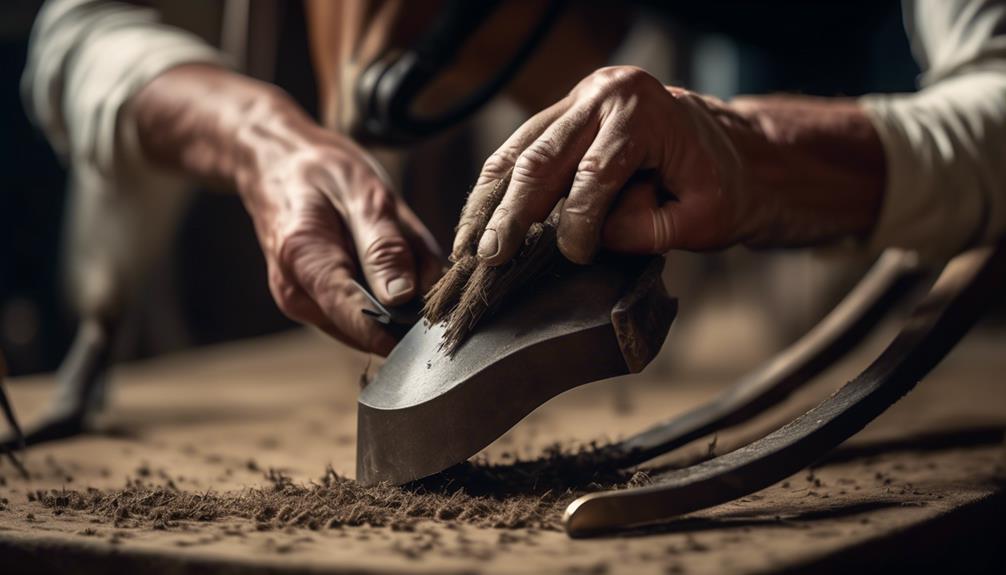
To ensure the health and longevity of your Westphalian horse, proper hoof care and maintenance is essential. Here are five crucial steps to keep your horse’s hooves in top condition:
- Regular trimming: Schedule regular visits from a professional farrier to trim your horse’s hooves and ensure proper balance.
- Cleanliness: Keep the hooves clean and free from debris by picking them out daily. This helps prevent infections and other hoof-related issues.
- Inspection: Regularly inspect the hooves for signs of cracks, bruises, or any abnormalities. Early detection can prevent further damage.
- Moisturize: Apply a hoof moisturizer or conditioner to keep the hooves hydrated and prevent them from becoming brittle.
- Proper shoeing: If your Westphalian horse requires shoes, make sure they’re fitted properly and adjusted regularly.
Conclusion: The Beauty of Westphalian Horses
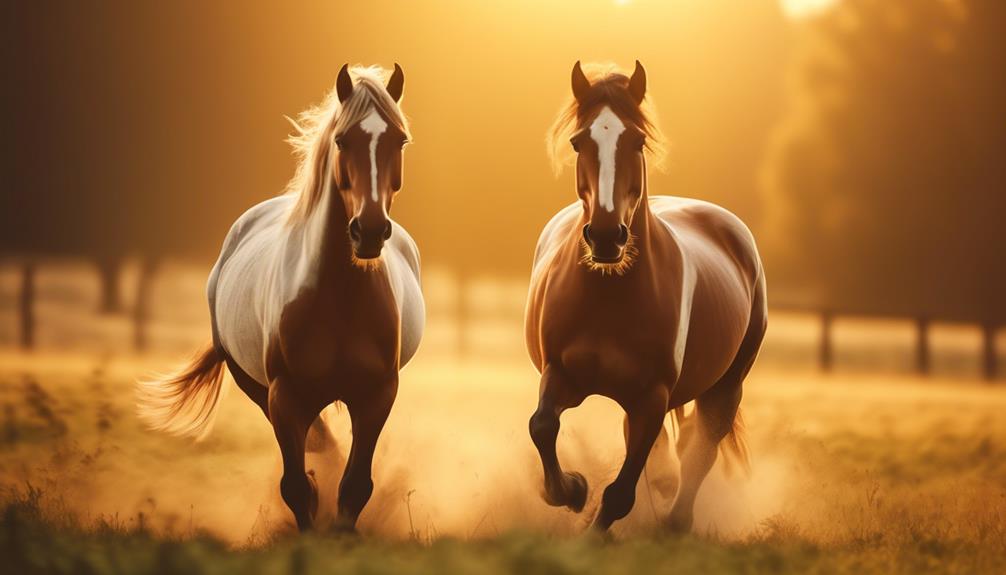
Now let’s appreciate the beauty of Westphalian horses, a breed that captivates with its powerful presence and versatile abilities.
Westphalian horses possess an attractive head with a slightly dished or straight profile, enhancing their overall elegance. Their long neck and deep chest contribute to their regal appearance, while their powerful loins, sloping shoulders, and strong hindquarters showcase their strength and athleticism.
Despite their power, they’ve a lighter build compared to other warmblood breeds, adding to their grace and agility.
Westphalian horses come in a variety of colors, including black, gray, chestnut, and bay, further enhancing their beauty.
With their striking looks and exceptional conformation, Westphalian horses are undeniably a sight to behold.
Frequently Asked Questions
How Do Westphalian Horses Compare to Other Warmblood Breeds in Terms of Build and Conformation?
Westphalian horses have a lighter build compared to other warmblood breeds. They have powerful loins, sloping shoulders, and strong hindquarters. Their overall conformation is similar to the Hanoverian horse, making them a visually appealing breed.
Are There Any Specific Color Requirements or Preferences for Westphalian Horses?
No, there are no specific color requirements or preferences for Westphalian horses. They can come in a variety of colors, including black, gray, chestnut, and bay, as well as any other solid equine color.
What Are Some Additional Grooming Tips and Techniques for Maintaining the Beauty of Westphalian Horses?
To maintain the beauty of your Westphalian horse, follow these grooming tips: use equine shampoo and grooming kit, regularly clean and detangle with curry comb and dandy brush, use shedding blade, body finishing brush, damp rag, and hoof pick for overall cleanliness and health.
How Do Westphalian Horses Differ From Hanoverian Horses in Terms of Temperament and Trainability?
Westphalian horses are known for their relaxed and easy temperament, making them suitable for all levels of horse owners. They are highly trainable and excel in dressage and show jumping, just like Hanoverian horses.
What Are Some Common Equine Sports in Which Westphalian Horses Excel and Why?
Westphalian horses excel in dressage and show jumping due to their even temperament and work ethic. They are relaxed and easy to work with, making them suitable for all levels of horse owners, trainers, and riders.
What Makes Westphalian Horses Powerful and Versatile?
The Westphalian horse is renowned for its power and versatility. With a strong build and exceptional athleticism, these horses excel in both dressage and jumping. The Akhalteke horse profile, known for its endurance and agility, greatly contributes to the Westphalian horse’s impressive abilities, making it a top choice for equestrians.
Conclusion
In conclusion, Westphalian horses are a remarkable breed that embodies power, versatility, and irresistible beauty.
With their rich history and impressive bloodlines, they excel in various equine sports, particularly dressage and show jumping.
Their relaxed and easy-going nature makes them suitable for riders of all levels.
Not only are they stunning to look at, but their work ethic and even temperament make them a joy to work with.
Whether you’re a competitor or simply a horse lover, the Westphalian breed will surely captivate your heart.

